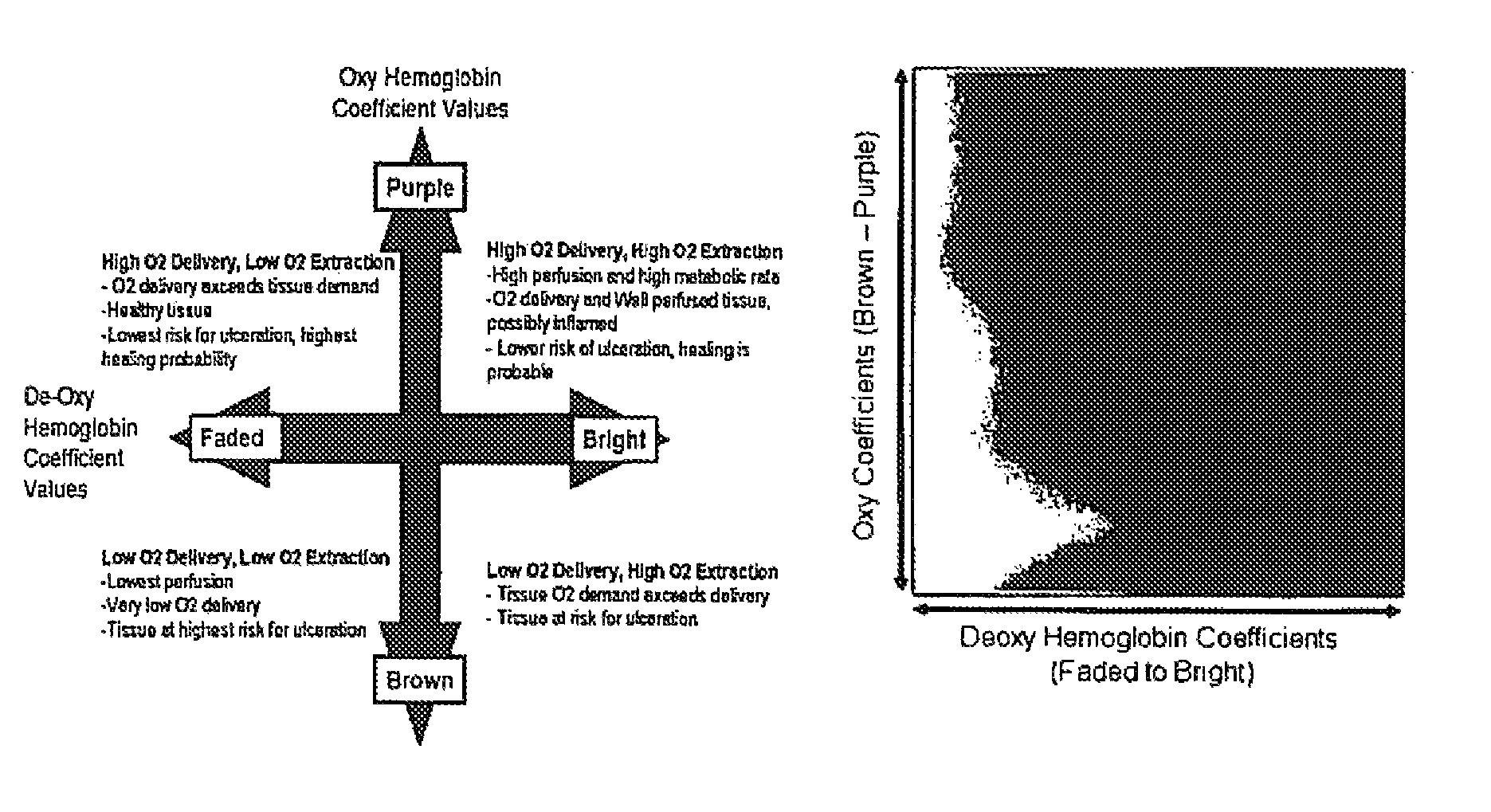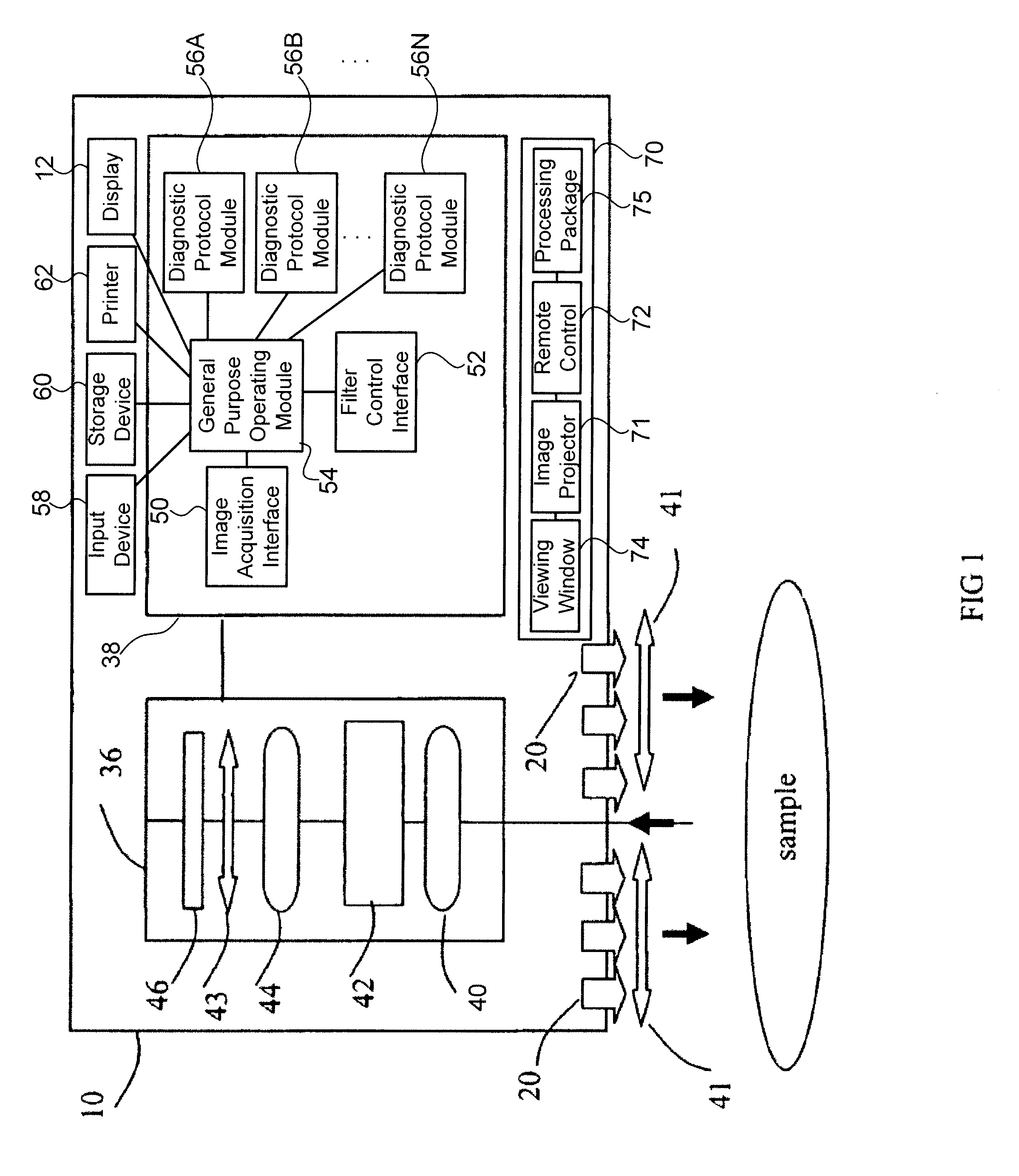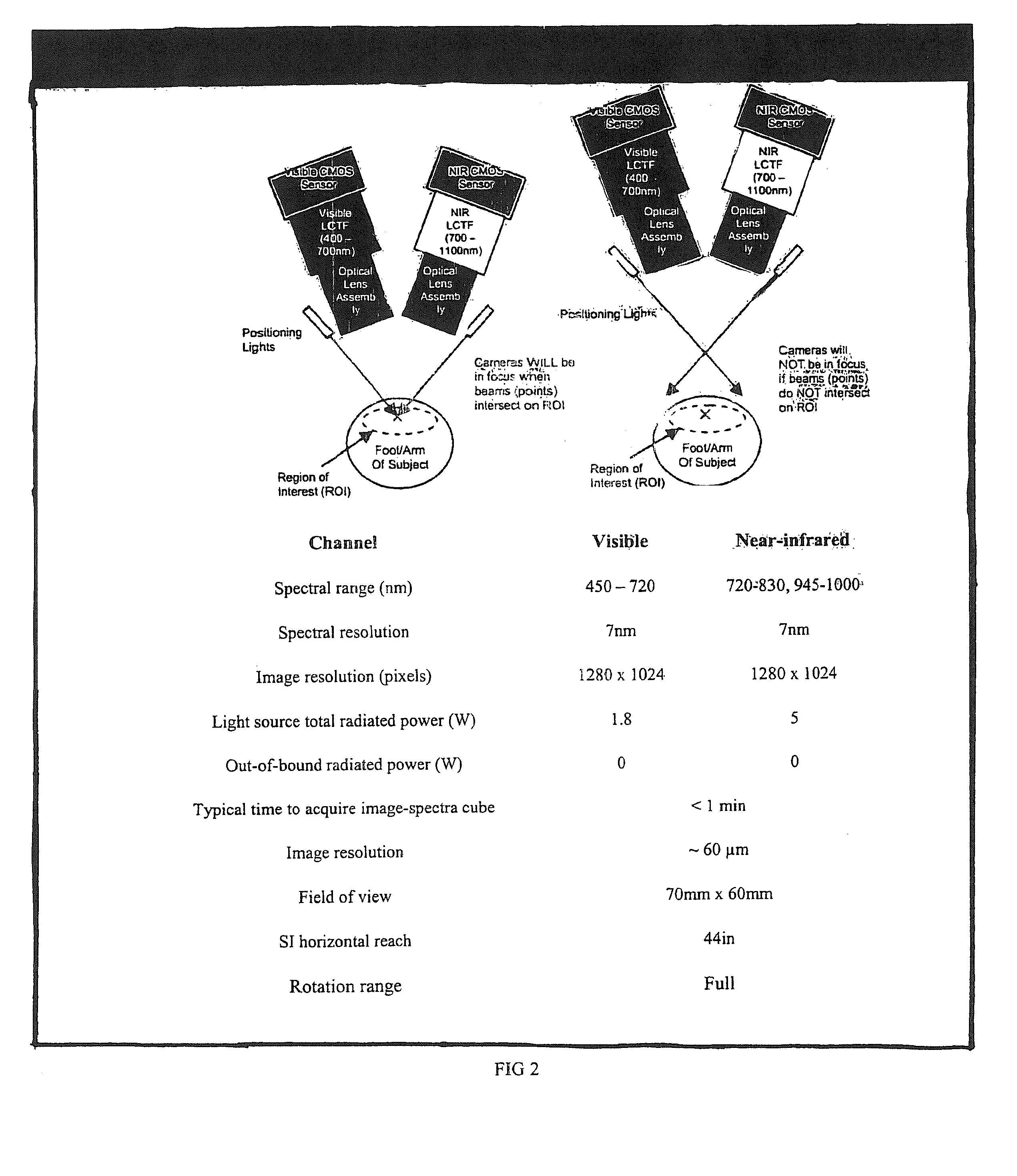Hyperspectral imaging in diabetes and peripheral vascular disease
a multi-spectral imaging and diabetes technology, applied in the field of medical tissues hyperspectral and multi-spectral imaging, can solve the problems of affecting the healing potential of wounds, affecting the fundamental independence of patients, and affecting the treatment effect of patients with diabetes. , to achieve the effect of evaluating the potential for wound healing and overcompensating the problems and disadvantages
- Summary
- Abstract
- Description
- Claims
- Application Information
AI Technical Summary
Benefits of technology
Problems solved by technology
Method used
Image
Examples
Embodiment Construction
[0063]The major clinical advantage of hyperspectral imaging is the delivery of metabolic information derived from the tissue's spectral properties in an easily interpretable image format with high spatial resolution. This 2-D information allows gradients in biomarker levels to be assessed spatially. Multiple images taken over time allow the gradiant to be measured temporally. This adds new dimensions to the assessment of ulceration risk and tissue healing in that it will allow the physician to target therapy and care to specific at risk areas much earlier than previously possible. The reporting of biomarkers such as OxyHb and deoxyHb levels in tissue individually and in an image format where spatial distributions can be assessed has not been done before. Typically the two numbers are combined in a ratio and reported as percent hemoglobin oxygen saturation (O2Sat). MHSI has the clear potential to be developed into a cost effective, easy to use, turn-key camera-based metabolic sensor ...
PUM
 Login to View More
Login to View More Abstract
Description
Claims
Application Information
 Login to View More
Login to View More - R&D
- Intellectual Property
- Life Sciences
- Materials
- Tech Scout
- Unparalleled Data Quality
- Higher Quality Content
- 60% Fewer Hallucinations
Browse by: Latest US Patents, China's latest patents, Technical Efficacy Thesaurus, Application Domain, Technology Topic, Popular Technical Reports.
© 2025 PatSnap. All rights reserved.Legal|Privacy policy|Modern Slavery Act Transparency Statement|Sitemap|About US| Contact US: help@patsnap.com



